Migration 1969
In 1969 and 1970 ornithological work on Surtsey was continued, especially
during
the spring migration
period. During 1969 observers stayed on the island from April 11
to
May 15 and again from September 11 to September 18, so let us have
a look at what
happened in 1969, 6 years after the island came to live.

ardeola
ralloides
©?
http://www.geocities.com/ivn_vogels_dwaalgasten/Ralreiger_Ardeola-ralloides.html
A new bird to Iceland, the Squacco Heron
(ardeola ralloides) was collected amongst
167 birds collected during the spring and 6 in the autumn. According
to the web-site
found at http://www.birdguides.com
that bird
certainly had nothing to do on Surtsey, but anyhow - it was there....

Several drift migrants were seen in spring 1969, such as
Redwing
(Turdus iliacus),
European Robin (erithacus
rubecula), Field Fare (Turdus pilaris),
Ring Ouzel (Turdus torquatus), Song
Thrush (Turdus philomelos),
Sky Lark (Alauda arvensis),
Jackdaw
(Corvus monedula),
Bramblin
(Fringilla montifringilla),
Chiffchaff
(Phylloscopus collybita)
(in autumn only) and Swallow
(Hirundo rustica).
With a few exceptions, all
pictures are collected from the great bird-site
'Birds in Denmark' at :
http://www.birds-of-denmark.dk/
The arrival of Icelandic passerines such as the Wheatear,
the Meadow
Pipit, and the
White Wagtail
was somewhat delayed, probably due to unfavourable weather conditions
in the British Isles, which may have caused a delayed departure.
The ravens
that stayed on the island also last year, are still around.
Migration 1970
One month of study was carried out from April 18 to May 12. In the
autumn two highly
skilled and experienced bird watchers were on the island.
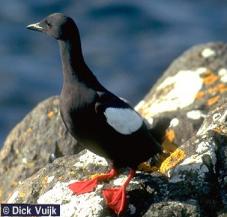
cepphus
grylle
The most important ornithological event happening on Surtsey in
1970 was the nesting
of the first two species on the island: the Fulmar
(fulmaarus glacialis),
and the Black Guillemot (cepphus
grylle).
The nest of the Black Guillemot
was found on July 27 when it contained two half-grown
young. The nest was in a crevice 7 m above sea level in 13 m high
cliffs on the south-west
side of the island. The young left the nest about August 20.
The nest of the Fulmar
was found on August 19 on a ledge 10 m above sea level in 25 m
high cliffs on the west side of the island. One young bird left
the nest on September 4.
That part of the cliffs where the nest was found has been occupied
by Fulmars for a
number of years.
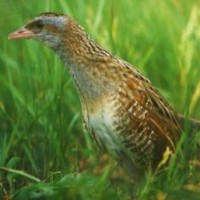
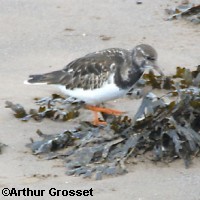

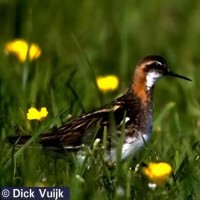

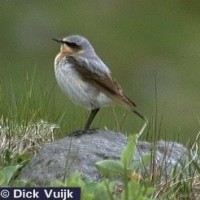
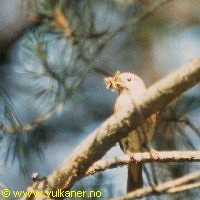
Birds collected in 1970 in addition to those collected in 1969
were Corncrake (Crex crex), Turnstone
(Arenaria interpres), Purple Sandpiper
(Calidris maritima),
Sanderling (Crocethia alba), Red Necked
Phalarope (Phalaropus lobatus),
Puffin (Fratercula arctica), Willow
Warbler (Oenanthe oenanthe)
and a male Redstart
(Phoenicurus phoenicurus).
Another
report from 1968 is given here
Text mainly extracted from reports made by
Finnur Gudmundsson,
Museum of Natual History, Reykjavik, Iceland.
Surtsey Research Report No. XI
Here you can find more about Surtsey:
|
|
Birds |
|
|
Plants |
|
|
Insects |
|
|
Sealife |
|
|
Fossils on Surtsey |
|
|
How life developed |
|
|
The eruption |
|
|
Picture-review |
See the
last report from Surtsey Research - 2009. Click here
Back to the menu
Any questions, or a feeling of knowing more, just get in touch!
MAILBOX

















